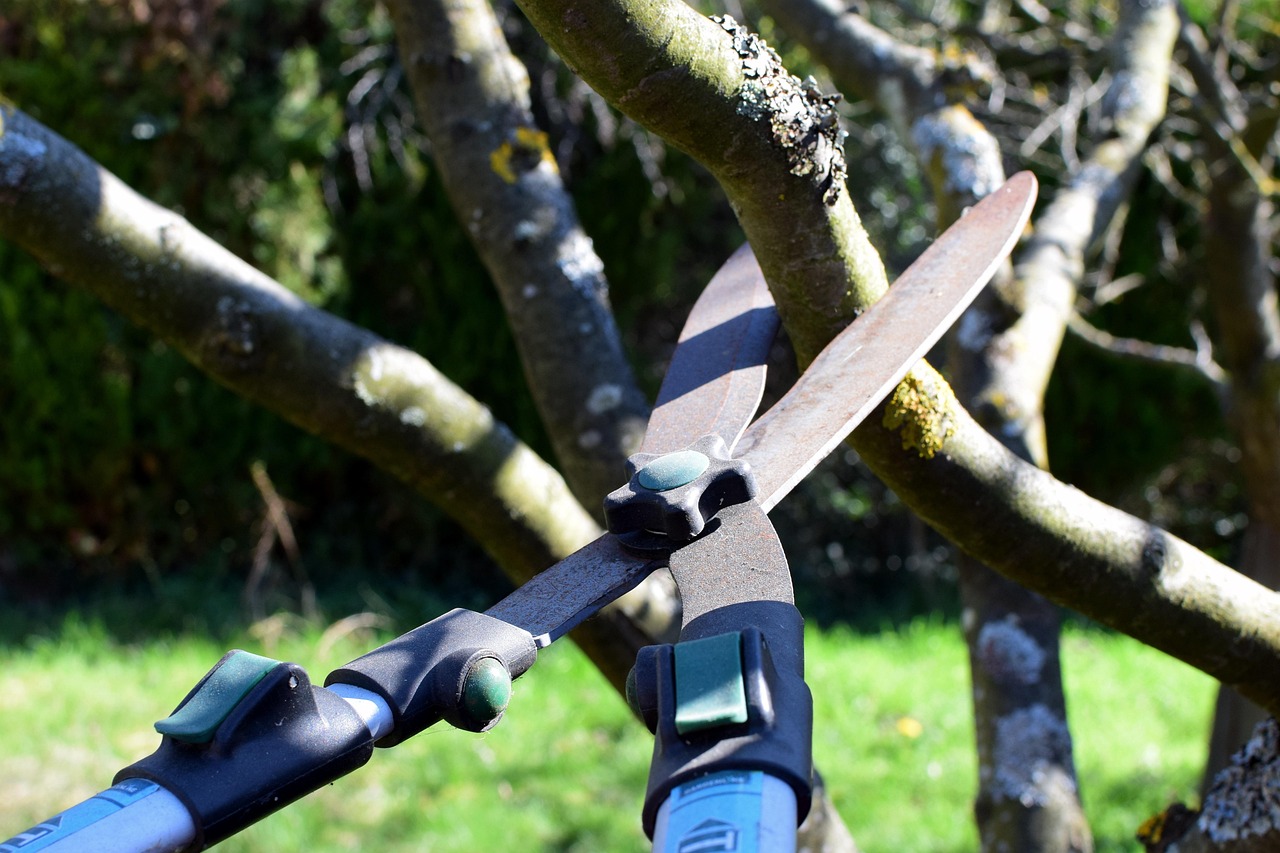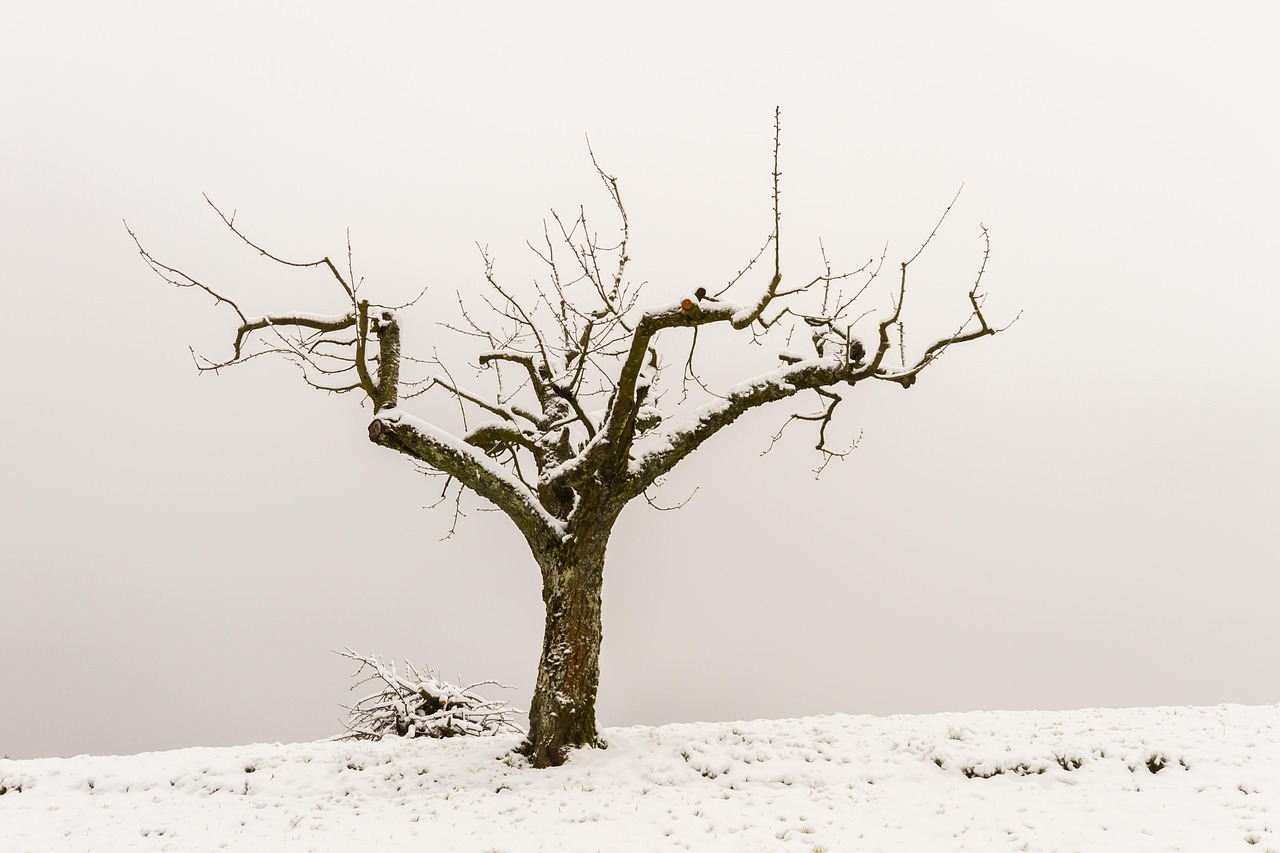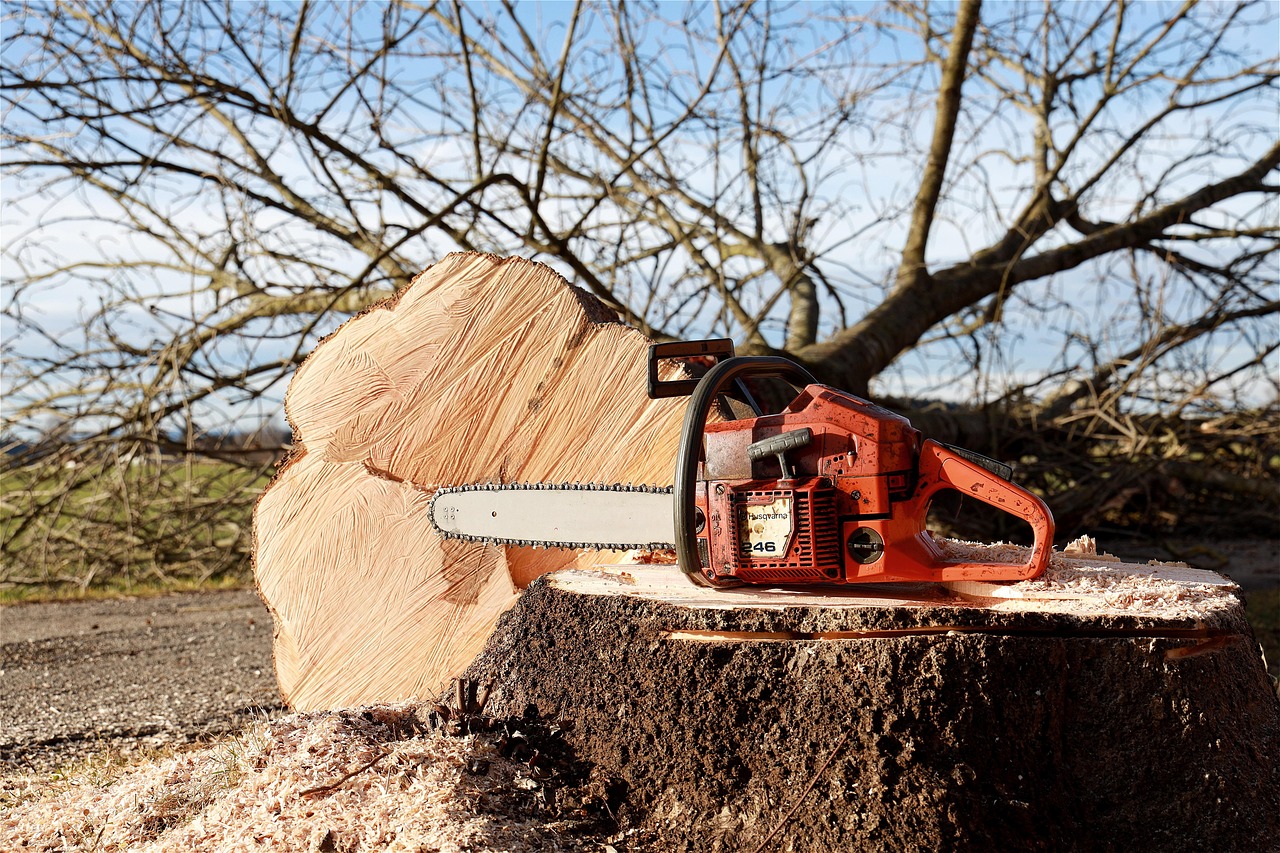Tree pruning around electric utility lines is essential for safety and maintenance. Regular pruning prevents branches from making contact with power lines, reducing the risk of power outages and fire hazards. Proper techniques ensure the health of the trees while maintaining clear access to utility services.
Understanding the Importance of Tree Pruning
Tree pruning is a crucial practice that enhances the health and aesthetics of trees. However, when it comes to trees near electric utility lines, pruning takes on a different level of importance. Trees can grow into power lines, leading to potential hazards. These hazards can cause power outages, create fire risks, and even result in dangerous situations for people and wildlife.

Utility companies often have specific guidelines for tree pruning around power lines to ensure safety and compliance with regulations. Understanding these guidelines is essential for property owners and anyone involved in landscaping or tree care. Regular pruning can help maintain a safe distance between tree branches and utility lines, thereby preventing numerous issues.
Key Benefits of Pruning Near Utility Lines
There are several benefits to tree pruning around electric utility lines. Here are some key advantages:
- Safety: Proper pruning reduces the risk of branches interfering with power lines, which can prevent accidents and injuries.
- Reliability: Regular maintenance ensures a more reliable power supply by minimizing outages caused by falling branches or contact with lines.
- Tree Health: Pruning encourages healthy growth by removing dead or diseased branches, improving overall tree vitality.
- Compliance: Adhering to utility company guidelines helps property owners avoid fines and penalties.
Regulations and Guidelines
Utility companies have established regulations regarding tree pruning near power lines. These guidelines are designed to protect both the trees and the electrical infrastructure. It is crucial for anyone involved in tree care to familiarize themselves with these rules. Some important aspects include:

| Regulation | Description |
|---|---|
| Clearance Requirements | Trees must maintain a minimum distance from power lines, typically 10 feet or more, depending on local regulations. |
| Pruning Standards | Specific pruning techniques must be used to avoid damaging the tree’s health and structure. |
| Notification Procedures | Property owners may need to notify utility companies before significant pruning activities. |
Best Practices for Tree Pruning Around Utility Lines
When it comes to pruning trees near utility lines, following best practices is essential. Here are some tips for effective and safe pruning:
- Hire Professionals: Engage certified arborists or tree care professionals experienced with utility line pruning.
- Assess Tree Species: Different species have varying growth patterns. Understanding these can guide proper pruning techniques.
- Avoid Topping: Never top trees as it can lead to weak growth and increased risk of branch failure.
- Use Proper Tools: Ensure that tools are sharp and clean to make clean cuts that promote healing.
- Monitor Growth: Regularly check tree growth after pruning to ensure ongoing compliance with clearance requirements.
Following these best practices not only ensures compliance but also promotes the long-term health of the trees. Trees that are well-cared-for can thrive alongside utility infrastructure without posing risks or hazards.
The Role of Utility Companies
Utility companies play a vital role in managing tree growth near power lines. They often conduct routine inspections and maintenance to ensure that trees do not encroach on their infrastructure. Additionally, they may provide resources and information to homeowners about safe tree planting and care practices. Understanding the role of these companies can help property owners make informed decisions regarding landscaping and tree care.

In many cases, utility companies will work directly with local municipalities to manage trees near power lines. This collaboration can involve community outreach programs focused on educating residents about the importance of tree pruning and maintenance. By taking proactive measures, both utility companies and property owners can contribute to a safer and more reliable electrical system.
Understanding Tree Growth Patterns
To effectively manage tree pruning around electric utility lines, it is important to understand tree growth patterns. Different species of trees have unique growth habits and characteristics. Knowledge of these patterns can help in planning pruning strategies that maximize safety while maintaining tree health.
Tree growth can be influenced by various factors such as soil quality, moisture levels, and sunlight. Here are some common growth patterns observed in trees:

- Vertical Growth: Some trees grow predominantly upward, seeking light. These trees may require more frequent pruning to maintain safe distances from power lines.
- Horizontal Growth: Trees that spread widely can encroach upon power lines more quickly. Regular monitoring is necessary to prevent overgrowth.
- Branching Patterns: The way branches grow out from the trunk can affect how close they come to utility lines. Understanding this can help in making effective pruning decisions.
Seasonal Considerations for Pruning
The timing of tree pruning is crucial for both the health of the trees and safety around utility lines. Different seasons present unique opportunities and challenges for tree care. Here are some considerations:
Spring Pruning
Pruning in spring can help promote healthy growth as trees enter their growing season. It is an ideal time to remove dead or damaged branches before new leaves emerge. However, caution is needed as many trees are also in bloom during this time.
Summer Pruning
Summer pruning is often done to remove excess foliage that may pose a risk to power lines. This time allows for easy visibility of branches that may need trimming. However, excessive summer pruning can stress trees, so it should be done judiciously.
Fall Pruning
Fall is generally not recommended for significant pruning. As trees prepare for dormancy, cutting can interfere with their natural processes. However, minor adjustments can be made to ensure safety before winter storms.
Winter Pruning
Winter is often considered the best time for major pruning activities. Trees are dormant, making it easier to see branch structures without leaves obstructing the view. Additionally, the risk of disease transmission is lower during this period.
Common Tree Species and Their Pruning Needs
Different tree species have varying requirements when it comes to pruning. Understanding these needs helps ensure effective management around utility lines. Below is a table summarizing common tree species found near utility lines and their specific pruning needs:
| Tree Species | Pruning Needs |
|---|---|
| Maple | Prune in late winter to avoid sap loss. Regular thinning is beneficial. |
| Pine | Prune in late spring after new growth appears. Avoid heavy pruning. |
| Oak | Avoid pruning during the growing season to prevent disease. Late winter is ideal. |
| Birch | Best pruned in late summer to avoid excessive sap loss. |
Tools and Equipment for Safe Pruning
Having the right tools is essential for effective and safe tree pruning. Proper equipment not only makes the job easier but also ensures that cuts are clean and do not harm the tree. Here are some commonly used tools:
- Hand Pruners: Ideal for small branches and precise cuts.
- Loppers: Used for larger branches, providing leverage for a clean cut.
- Saws: For cutting thicker branches, either manual or powered options are available.
- Climbing Gear: If working on tall trees, safety harnesses and ropes are necessary.
- Safety Equipment: Hard hats, gloves, and eye protection should always be worn during pruning activities.
The Impact of Weather on Pruning Activities
Weather conditions significantly affect tree pruning practices. Understanding these impacts helps ensure safety and effectiveness during pruning tasks. Here are some weather-related considerations:
- Wind: High winds can make pruning dangerous, especially when working at heights or near power lines.
- Rain: Wet conditions can lead to slippery surfaces, increasing the risk of accidents.
- Trees in Dormancy: Cold weather encourages dormancy, making it a safer time for major pruning activities.
By considering these weather factors, tree care professionals and property owners can plan their pruning schedules effectively, minimizing risks associated with environmental conditions.
Common Risks Associated with Tree Pruning
While tree pruning is essential for safety and health, it also comes with certain risks. Understanding these risks can help individuals take preventive measures during pruning activities. Here are some common hazards associated with tree pruning around electric utility lines:
- Electrical Hazards: The most significant risk is contacting power lines while pruning. This can lead to severe injury or even death.
- Falling Branches: Improper cutting techniques can result in branches falling unpredictably, posing a danger to anyone nearby.
- Injury from Tools: Using sharp tools improperly can lead to cuts, punctures, or other injuries.
- Slip and Fall Accidents: Working on ladders or uneven ground increases the risk of falls.
Safety Protocols for Tree Pruning
To mitigate the risks associated with tree pruning, following established safety protocols is crucial. Here are some recommended safety practices:
- Conduct a Risk Assessment: Before starting, evaluate the work area for hazards such as nearby power lines and unstable ground.
- Wear Appropriate Safety Gear: Ensure that all team members wear helmets, gloves, safety glasses, and non-slip footwear.
- Use Proper Techniques: Familiarize yourself with safe pruning techniques to minimize the risk of injury. Cut branches at the right angle and avoid overreaching while on ladders.
- Establish a Safety Zone: Set up a designated area around the worksite to keep bystanders at a safe distance.
- Have an Emergency Plan: Prepare for potential accidents by having first aid kits and emergency contact information readily available.
Hiring Professional Tree Care Services
Many property owners may find tree pruning around utility lines to be challenging or risky. Hiring professional tree care services can be a wise decision, especially when dealing with high-voltage areas. Here are some advantages of hiring experts:
- Expert Knowledge: Certified arborists have specialized training in tree biology and proper pruning techniques, ensuring that trees remain healthy while meeting safety standards.
- Access to Equipment: Professionals have the right tools and equipment to perform safe and efficient pruning, reducing the risk of injury.
- Insurance and Liability: Reputable companies carry insurance, protecting property owners from liability in case of accidents during the pruning process.
- Regulatory Compliance: Professional services are familiar with local regulations regarding tree care near utility lines, ensuring compliance with safety standards.
Understanding Utility Company Policies
Utility companies often have specific policies regarding tree pruning near their infrastructure. Familiarizing yourself with these policies can help property owners make informed decisions about tree care. Some common policies include:
| Policy Area | Description |
|---|---|
| Tree Trimming Schedules | Utility companies may have specific schedules for regular tree trimming to maintain clearances around power lines. |
| Notification Requirements | Homeowners may need to notify utility companies before undertaking significant pruning activities near power lines. |
| Right-of-Way Maintenance | Utility companies often maintain a right-of-way around their lines, which may require removal of certain trees or branches. |
| Emergency Responses | In case of storm damage or other emergencies, utility companies may perform urgent tree removal or trimming to restore power quickly. |
Community Involvement and Education
Communities can play a vital role in promoting awareness about tree pruning and utility line safety. Engaging residents through educational programs can foster better understanding of tree maintenance and its importance. Here are some initiatives that can be implemented:
- Workshops: Organizing workshops on safe tree pruning practices can equip homeowners with knowledge on how to care for their trees responsibly.
- Partnerships with Local Arborists: Collaborating with certified arborists for community events can provide valuable insights into tree health and maintenance.
- Awareness Campaigns: Launching campaigns to educate residents about the risks associated with trees near power lines can encourage proactive measures.
- Neighborhood Clean-Up Days: Organizing community clean-up days focused on maintaining public trees can enhance community involvement in local forestry.
The Role of Local Governments
Local governments can also contribute significantly to tree pruning efforts around electric utility lines. They can enact policies that promote safe practices and establish regulations for tree care. Some areas where local governments can make an impact include:
- Zoning Laws: Implementing zoning regulations that specify which tree species are suitable for planting near power lines can prevent future issues.
- Funding Programs: Providing funding or grants for community tree care initiatives can encourage residents to maintain safe distances between trees and utility lines.
- Tree Canopy Management Plans: Developing comprehensive urban forestry plans can help manage tree growth while ensuring utility line safety.
The collaboration between residents, local governments, and utility companies fosters a safer environment for everyone while encouraging healthy tree growth in urban landscapes.
Technological Innovations in Tree Management
As urban areas continue to expand, the integration of technology in tree management becomes increasingly important. New tools and technologies can enhance the effectiveness of tree pruning around electric utility lines. Here are some innovations that are making a significant impact:
- Drone Technology: Drones can be used for aerial surveys to assess tree health and growth patterns. They provide valuable insights into which trees may pose risks to utility lines.
- Remote Sensing: This technology allows for the monitoring of tree growth over time, helping utility companies predict potential hazards before they become significant issues.
- Mobile Apps: Various applications enable homeowners to identify tree species, learn about maintenance needs, and schedule pruning services efficiently.
- Automated Pruning Systems: These systems use robotics to perform precise cuts on trees, reducing human error and increasing safety for workers.
The Environmental Impact of Tree Pruning
Tree pruning does not only affect the trees themselves but also has broader environmental implications. Properly managed trees contribute to ecological health in various ways:
- Air Quality Improvement: Healthy trees filter pollutants from the air, contribute to oxygen production, and help mitigate climate change effects.
- Urban Heat Island Effect: Trees provide shade, reducing temperatures in urban areas and improving overall comfort for residents.
- Biodiversity Support: Well-maintained trees create habitats for various wildlife species, supporting local ecosystems.
Conversely, improper pruning can lead to stress on trees, making them more susceptible to diseases and pests. This can adversely affect their ability to contribute positively to the environment. Thus, responsible pruning practices are essential for maintaining ecological balance.
Community Engagement in Tree Care
Community involvement is crucial for effective tree care and management around electric utility lines. Engaging residents can lead to a greater understanding of the importance of safe pruning practices. Here are some ways communities can get involved:
- Volunteer Programs: Organizing community volunteer days for tree planting and maintenance fosters a sense of ownership and responsibility among residents.
- Educational Outreach: Schools and local organizations can host sessions on the importance of tree care, focusing on safety around utility lines.
- Tree Adoption Initiatives: Programs that allow families or groups to adopt and care for specific trees can enhance community bonding and environmental stewardship.
Encouraging Sustainable Practices
Sustainable practices in tree care are essential for ensuring long-term health and safety. Here are some strategies to encourage sustainability:
- Native Planting: Promote planting native tree species that are better adapted to local conditions and require less maintenance.
- Integrated Pest Management (IPM): Encourage the use of environmentally friendly pest control methods to minimize chemical use during tree care.
- Mulching and Watering Techniques: Educate residents on proper mulching and watering methods that support tree health while conserving water resources.
- Soil Health Awareness: Promote practices that improve soil health, such as organic amendments, which can enhance tree resilience.
Conclusion
Tree pruning around electric utility lines is a critical aspect of maintaining safety, reliability, and environmental health in urban areas. By understanding the importance of proper pruning techniques, seasonal considerations, risks involved, and the roles of various stakeholders—including utility companies, local governments, and community members—property owners can take proactive measures to ensure both tree health and public safety.
The integration of technology and community engagement adds further value to tree management efforts, fostering a culture of responsibility toward our green spaces. By adopting sustainable practices and involving more members of the community in tree care, we can create thriving urban environments that harmonize with essential utility infrastructure.
In summary, effective tree pruning is not merely about cutting branches; it is about fostering healthier ecosystems, enhancing public safety, and ensuring that our communities flourish alongside the natural world. Ongoing education, collaboration, and innovative solutions will be key components in achieving these goals for years to come.
